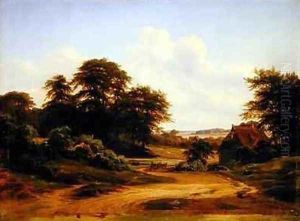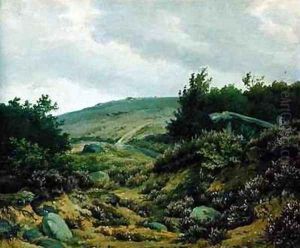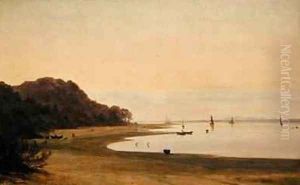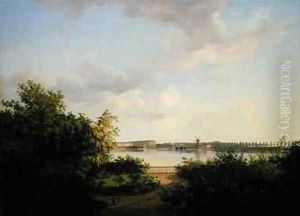Marcus Johann Haeselich Paintings
Marcus Johann Haeselich was a notable German artist born in 1813, whose work left an imprint on the 19th-century European art scene. Although perhaps not as widely recognized as some of his contemporaries, Haeselich's contributions to the world of art, particularly in the realms of painting and lithography, were significant during his time. Born in Hamburg, Germany, Haeselich's environment was ripe with the burgeoning movements that characterized the century, such as Romanticism, which deeply influenced his early works.
Haeselich was trained in the traditional academic style, but his art evolved to reflect the changing tastes and philosophical outlooks of his era. He spent a significant part of his career in Dresden, a city known for its cultural vibrancy and as a hub for artists and intellectuals. It was here that Haeselich honed his skills and developed a distinctive style, blending realism with the more emotive and expressive qualities that would come to define much of Romantic art.
Throughout his career, Haeselich was deeply engaged with the landscapes and people of his homeland, often depicting scenes that highlighted the natural beauty and historical depth of Germany. His landscapes were noted for their attention to detail, atmospheric effects, and emotional depth. Similarly, his portraits were celebrated for their insight into the character and inner life of his subjects, reflecting the Romantic interest in individuality and the human soul.
Despite his death in 1867, Haeselich's legacy lived on through his students and the pieces he left behind. His works are preserved in several German museums, serving as a testament to his skill and sensitivity as an artist. Marcus Johann Haeselich may not have achieved the same level of fame as some of his peers, but his contributions to the development of 19th-century German art are undeniably significant, offering a unique lens through which to view the era's aesthetic and cultural shifts.



